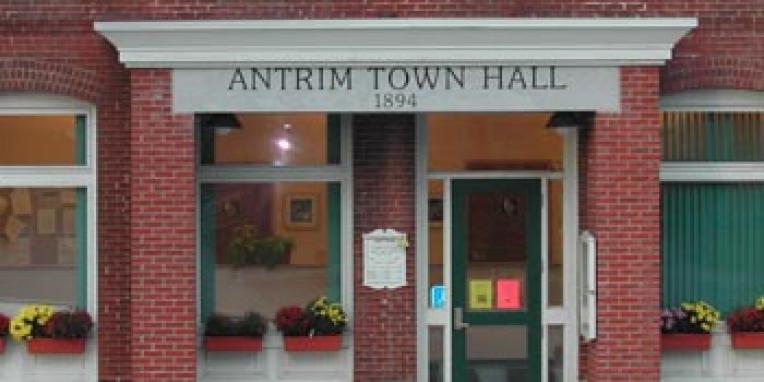Floodplains
Floodplains are land areas that are susceptible to flooding. These areas actually have two parts: the floodway and floodway fringe. The floodway includes the channel and an additional area that often carries excess flow. The floodway fringe (more commonly known as the 100-year floodplain or the Special Flood Hazard Area) is a broader area over which floodwater may spread, but where the flow velocity is slower. This is an important distinction for land use planning, since some uses can safely occur in the Special Flood Hazard Area, but not in the floodway.
The Federal Emergency Management Agency (FEMA) has mapped the floodplains for all relevant municipalities; the boundaries of the floodplains were computed at cross sections interpolated between cross sections, based on hydraulic information and past experience of flooding.
FEMA maps for Antrim are of two types - a Flood Insurance Rate Map (FIRM), and a Floodway Map. The FIRM defines the 100-year floodplain (meaning there is a 1 out of 100 chance of flooding in any given year; over long periods of time, base floods will occur on the average once every 100 years) and a small area of 500-year floodplain (a 1 out of 500 chance of flooding in any given year). Antrim has a rather large area of floodplain, primarily around the Contoocook and the North Branch Rivers.
Antrim’s maps became effective as of April 1, 1981 and the Town was able then to enter into the National Flood Insurance Program, permitting homeowners who live in the floodplain to purchase insurance for their property. However, in order for landowners to be able to purchase this insurance, the town needed to adopt a Floodplain Management Ordinance which was adopted. This Ordinance requires the town to keep track of all development in the Special Flood Hazard Areas and ensure that if any new construction or substantial improvements to a home are proposed for the SFHA, the lowest enclosed floor must be at or above the base flood elevation.
The purposes of this requirement are to minimize the potential for flood damage, to avoid damage-prone uses in the floodplains, and to reduce development pressure of flood hazard areas. Communities that do not maintain and/or enforce their floodplain regulations may be suspended from the insurance program, which could have serious consequences for any affected landowners if their mortgage holders chose to cancel the mortgage. For these reasons, it is very important for the town to keep the floodplain management ordinance up to date by amending it as necessary, and to monitor all development within them.




